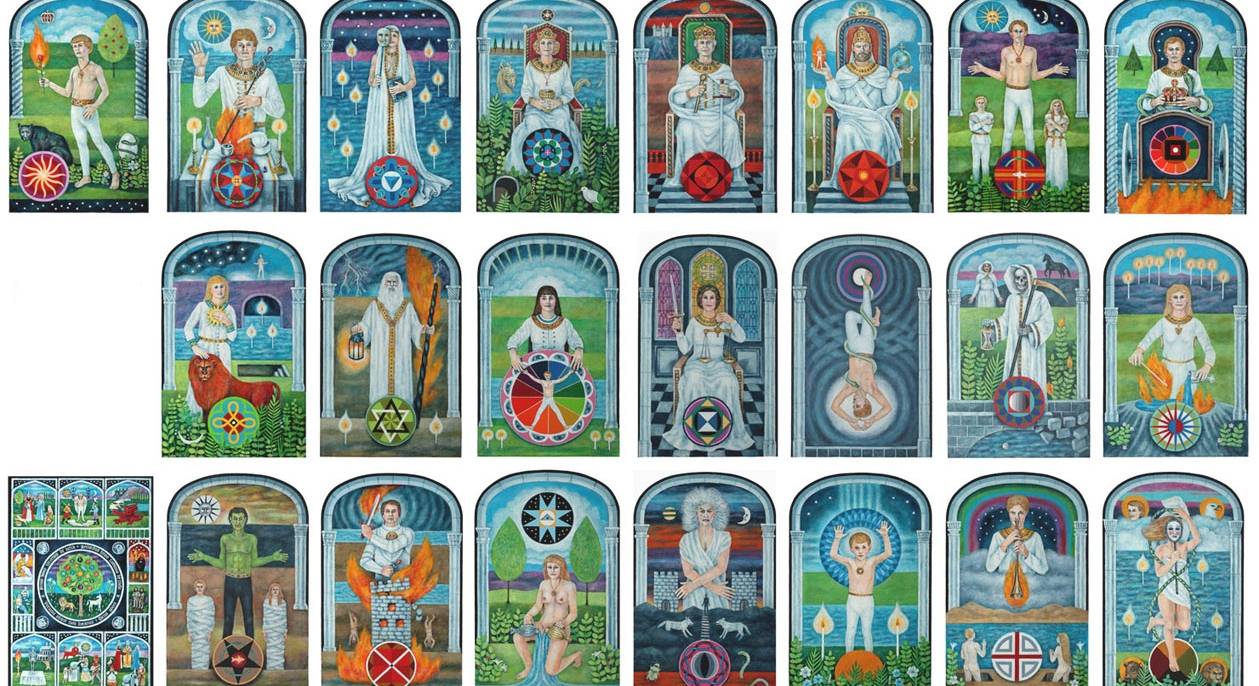Carl Jung's Tarot: Alchemy and Archetypes
Tarot reading, from Jung’s point of view, is a process that unveils the unconscious and which follows the perennial clues of psychic alchemy.
It is said that Swiss psychologist Carl Jung discovered “the internal Tarot” of the human mind with his notion of archetypes. And it could be also argued that Tarot was already an underlying layer of the collective mind, which is where archetypes are printed —those fundamental images that constitute the psychic constellation of the human being.
In a pack of 78 Tarot cards, much like the 64 hexagrams of the I Ching, an entire mutant mental universe is ciphered, which can be used to form predictions. “We can predict the future,” Jung stated, “when we know how the present moment evolved from the past.” This evolution of the present is linked to the past, just as the conscious mind is subjected to the unconscious: the Tarot card or the hexagram is a visible manifestation of this connection, a type of synchronicity that forces itself to rise to the surface, but requiring, just as an oracle does, an accurate interpretation.
In 1933, during a seminar, Jung spoke about Tarot (according to Visions: Notes of the Seminar given in 1930—1934), and he stated that these cards are the predecessors of the sets we use to gamble, where red and black represent two opposites, and the division of four —spades, hearts, diamonds and clubs— also corresponds to the symbolism of individualization. They are psychological images, symbols we play with, in the same manner that the unconscious seems to play with its contents. They are combined in a certain way, and its different combinations correspond to a playful development of humankind’s history.
There is an ongoing debate surrounding the origins of the Tarot, and whether this is actually the precedent of the cards that are typically used for amusement purposes. But, the most widely accepted version is that Tarot cards came subsequently; however, some versions related to occultism refer to the Tarot as the “Book of Thoth”, and claim the cards come from ancient Egyptian mysteries. Regardless of its roots, the design of its arcana is lost in time —with an ominous root that reemerges in the card sets used by modern-day sorcerers like Aleister Crowley or Alejandro Jodorowsky.
One of the greatest contributions Jung made to psychology was tracing the parallels between mental processes and alchemical processes that seek to transform (symbolically) matter into gold. It was in this same manner that the Swiss perceived the Tarot as an alchemical game:
Now in the Tarot there is a hermaphroditic figure called the diable [the Devil card]. That would be in alchemy the gold. In other words, such an attempt as the union of opposites appears to the Christian mentality as devilish, something evil which is not allowed, something belonging to black magic.”
If one wants to form a picture of the symbolic process, the series of pictures found in alchemy are good examples. . . . It also seems as if the set of pictures in the Tarot cards were distantly descended from the archetypes of transformation, a view that has been confirmed for me in a very enlightening lecture by professor [Rudolph] Bernoulli. The symbolic process is an experience in images and of images. Its development usually shows an enantiodromian* structure like the text of the I Ching, and so presents a rhythm of negative and positive, loss and gain, dark and light.”
Jung makes use of the enantiodromia, a Greek term implied in Heraclitean philosophy, which means: “that which becomes its opposite”. In a way, this is the perennial process of movement, necessary for good psychic health. The Sun must transform into the Moon; it is the rhythm of life, in whose coincidence lies alchemy.
